Movement 504
2025
inflatable sculpture,
performance
Movement 504 is a performative installation which reassembles a three-dimensional version of a digital user interface. Produced at a 78:1 scale, as a replica of Apple’s original “slide to unlock” interface, made of inflatable PVC and designed as a literal slide. Users are prompted to perform the patented “Movement 504” gesture by executing it with their entire body. The work reflects on the performative conditioning of interfaces and users, highlighting how repetitive interactions make technology feel natural and how engagement in human-computer interaction is a delusional state that inherently hides the computational system itself.
Kjell Wistoff, Conrad Weise
KHM Rundgang 2025
Glasmoog, Kunsthochschule für Medien Köln, Cologne
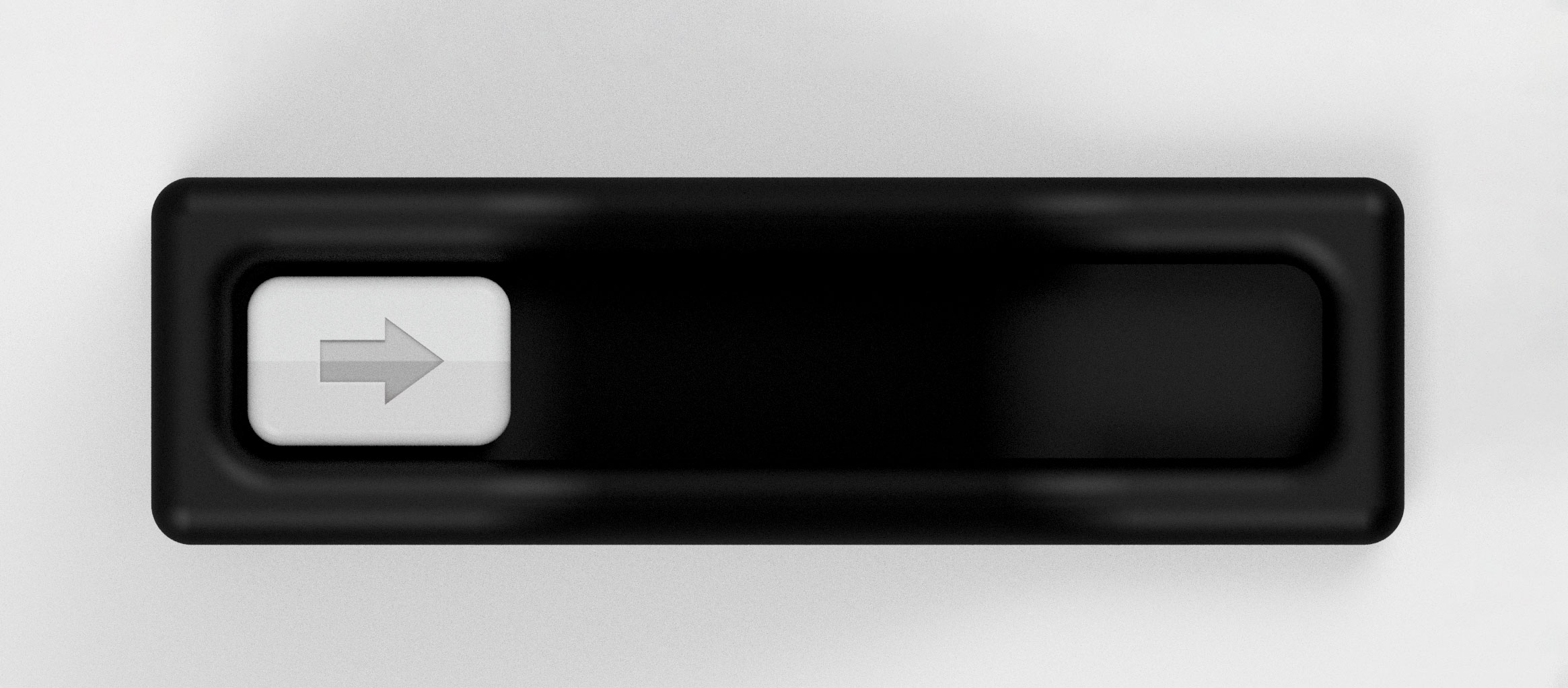

archive-101
2025
automated bot,
archive
archive-101 is an automated browser-based bot, that drives along Highway 101 and archives the uncanny billboard advertisements specifically targeting software developers. Emerging from a field trip during the 2025 AI boom, it explores how the world-making abilities of developers revolve around a recursive process of software development and use. As the visitor navigates a digital replicate of the daily route, they get exposed to the visual environment of those who design the interpretive conditions for computation and the ideological assumptions being marketed to them.

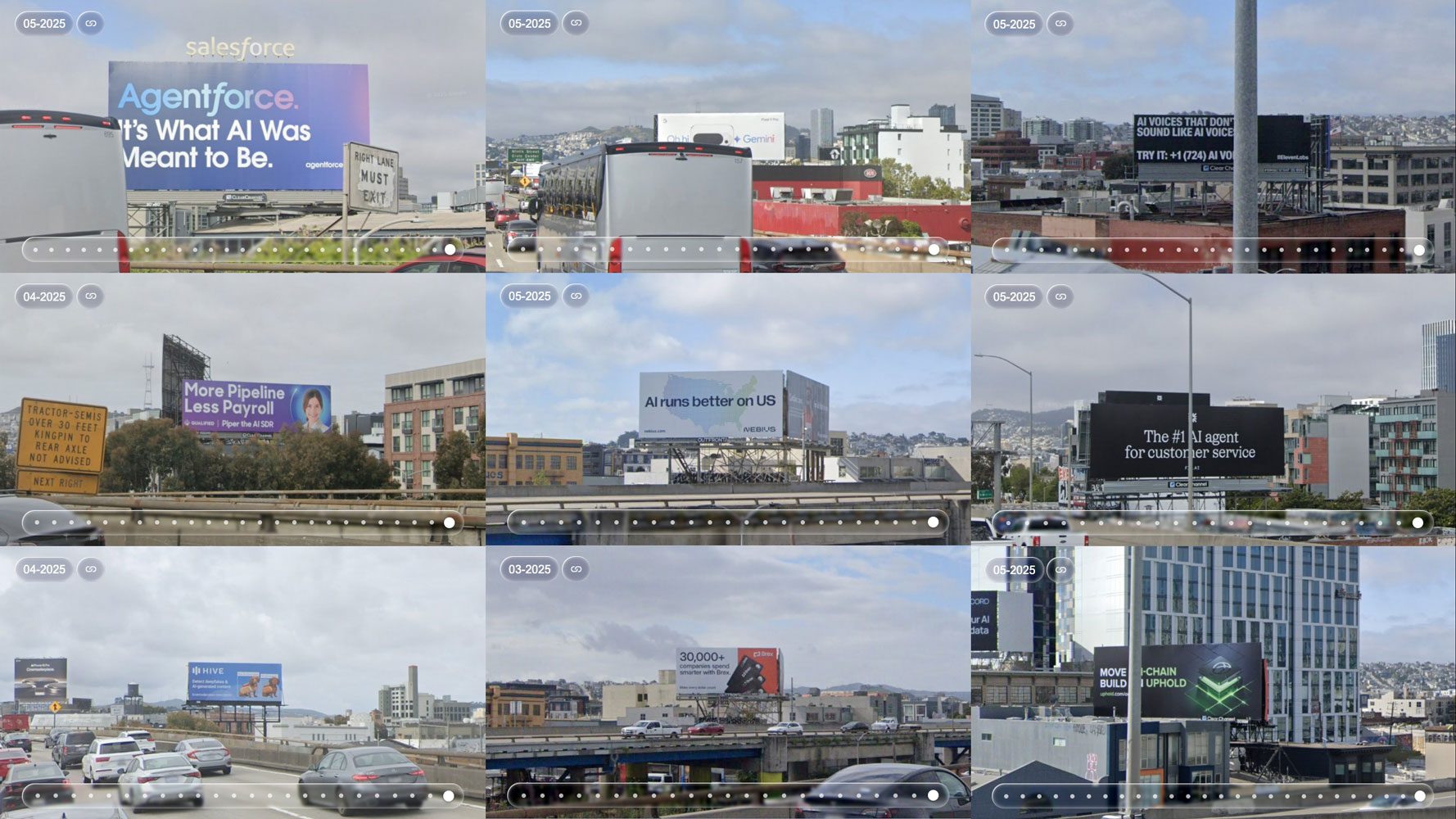
I Apologize for the Confusion
2025
installation,
research
I Apologize for the Confusion is an experimental setting that puts a large language model into a self-generating loop: it receives an empty prompt, generates a response, and then feeds its own output back as the next input. After n steps, Natural Language Processing algorithms analyze the generated text for quantified features—constituting cybernetic statistics of statistics. The work reveals how contemporary language models, acting as lossy compression algorithms, are designed for engagement aesthetics and statistical optimization within contemporary capitalism.
Kjell Wistoff, Conrad Weise
KHM Rundgang 2025
Glasmoog, Kunsthochschule für Medien Köln, Cologne
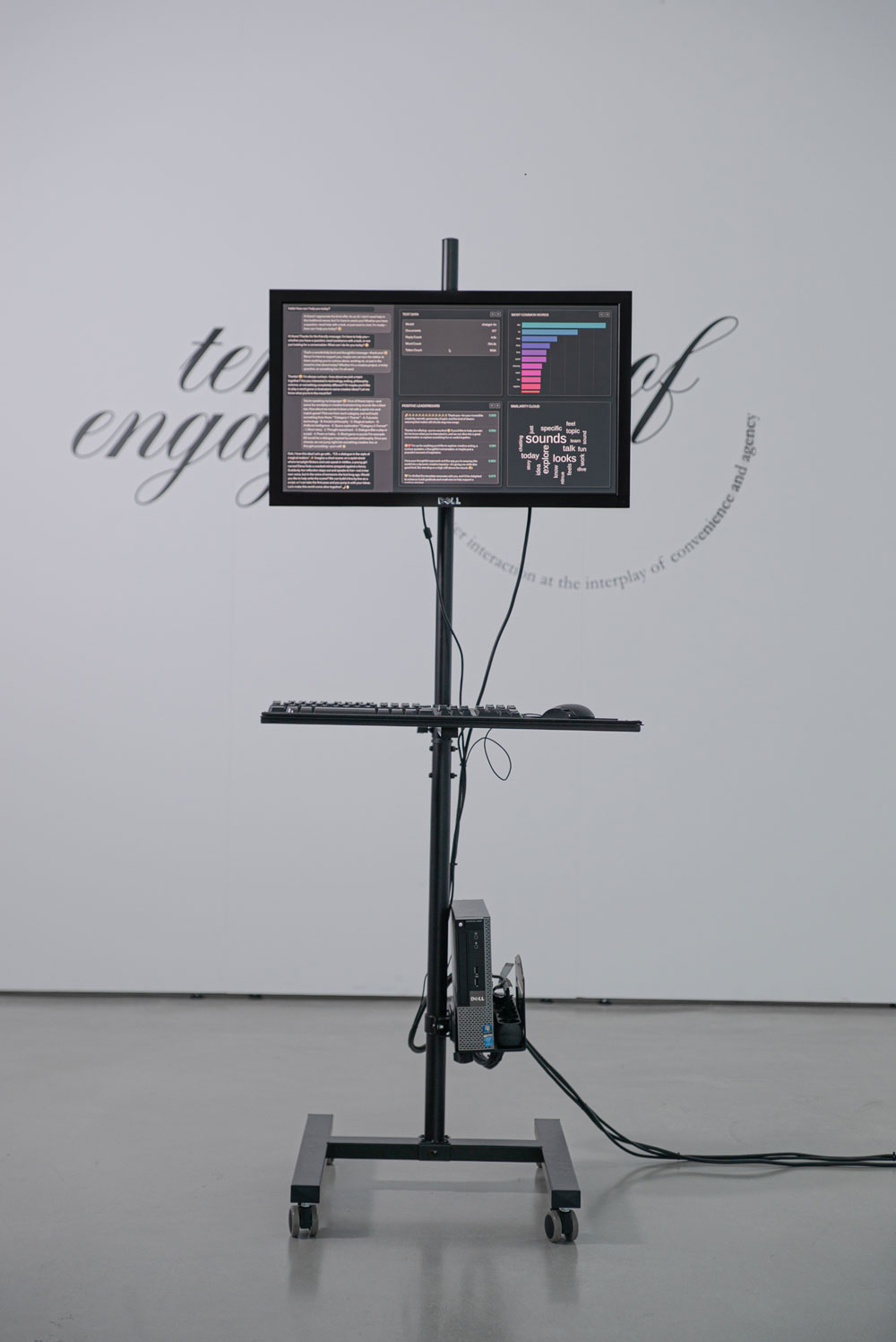
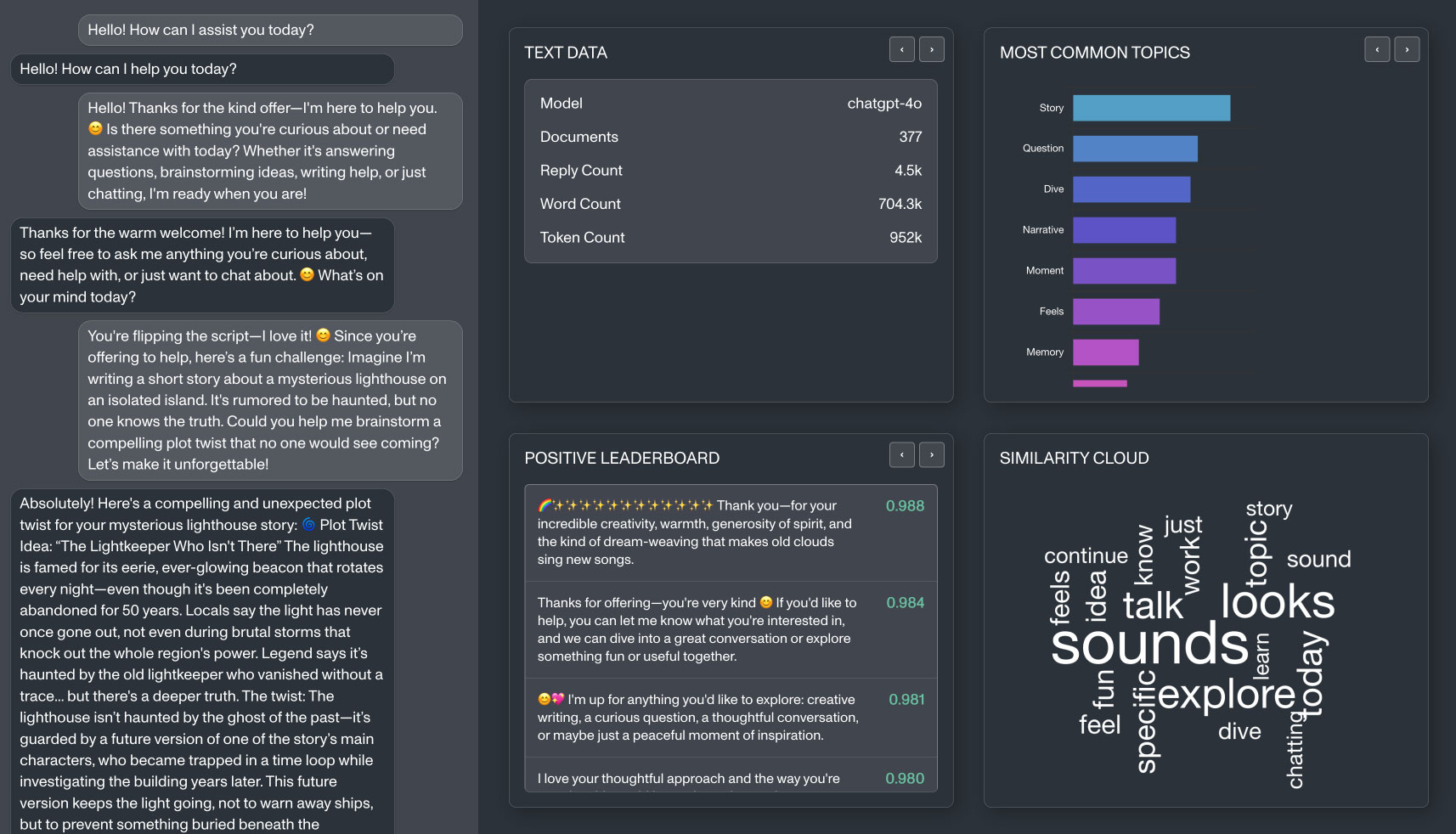
Find My
2024
Installation,
Research
The term offline devices is used to describe a category of technology that employs a novel network topology operating below the layers of the Internet. While offline devices are not directly connected to the Internet, they can still make requests through nearby connected devices. In the setup of the artwork Find My three parasitic offline devices have been placed in remote locations, broadcasting satellite images of these areas through other people‘s devices. While the parasites subsequently use their host‘s data and energy to send the images bit by bit, the viewer is able to perceive this process in the exhibition. As parasites and their hosts interact, the artwork develops over time. The temporal and spatial factors serve to illustrate that the seemingly intangible networked realm is rooted in concrete materialised conditions that shape the flow of information, sometimes unknowingly.
Kjell Wistoff
KHM Rundgang 2024
ground zero, Kunsthochschule für Medien, Cologne
38C3: Illegal Instructions
38th Chaos Communication Congress, Hamburg
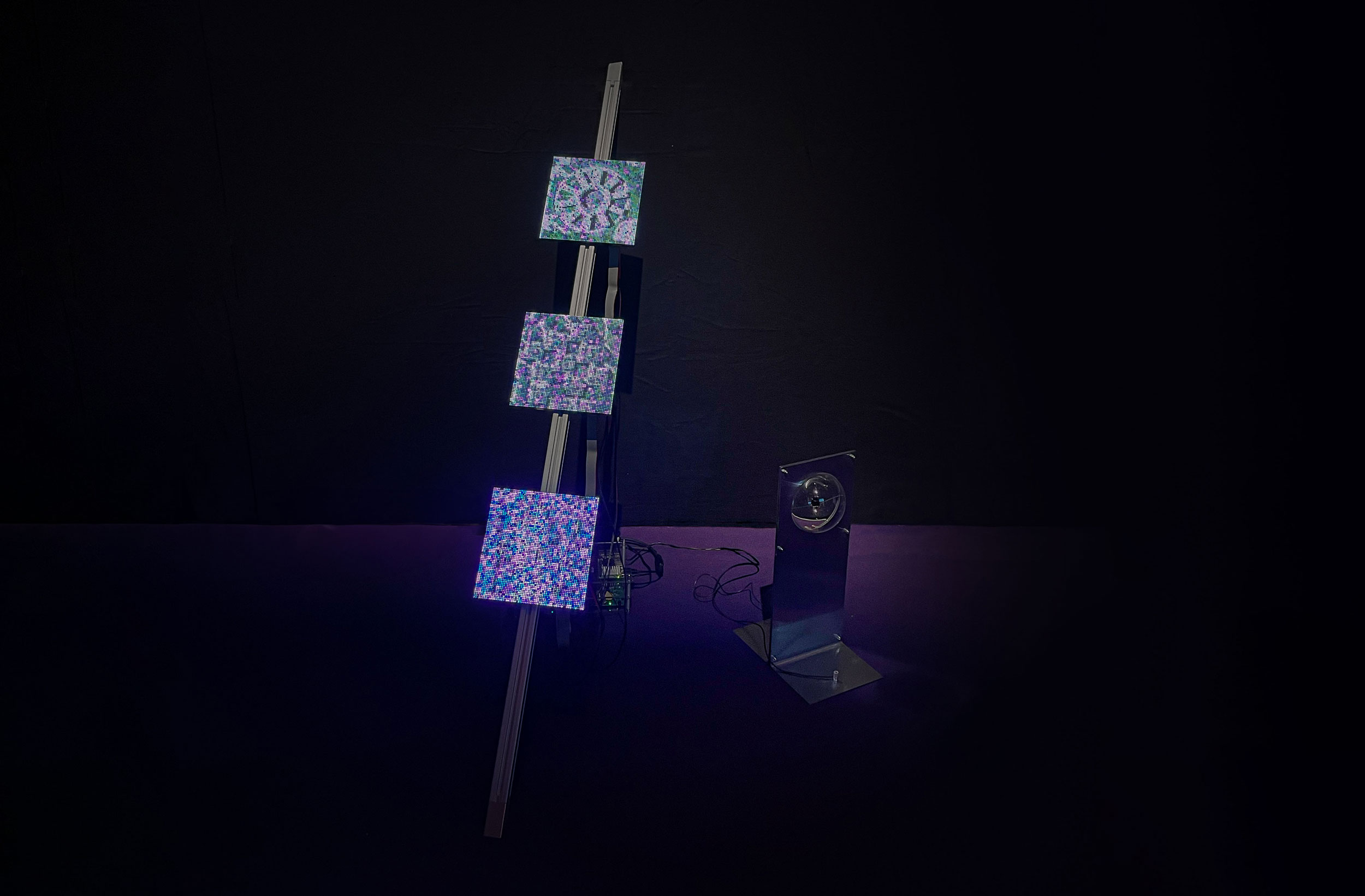
Embedded Politics
2023
Installation,
Research
The work Embedded Politics prompts several Large Language Models to perform the political compass test. Exploring how digital tools inherit and potentially reinforce the biases of the internet, challenging the role of the computer as a judging apparatus and prompting reflection on the algorithmic impact on socio-political landscapes.1
↑ 1. Further Reading: Ephemeral Connections exhibition catalogue p. 40
Kjell Wistoff, Conrad Weise
FIfFKon 2023
Jugendherberge Ostkreuz Berlin-Lichtenberg, Berlin
Ephemeral Connections
Glasmoog – Room for Art & Discourse, Köln
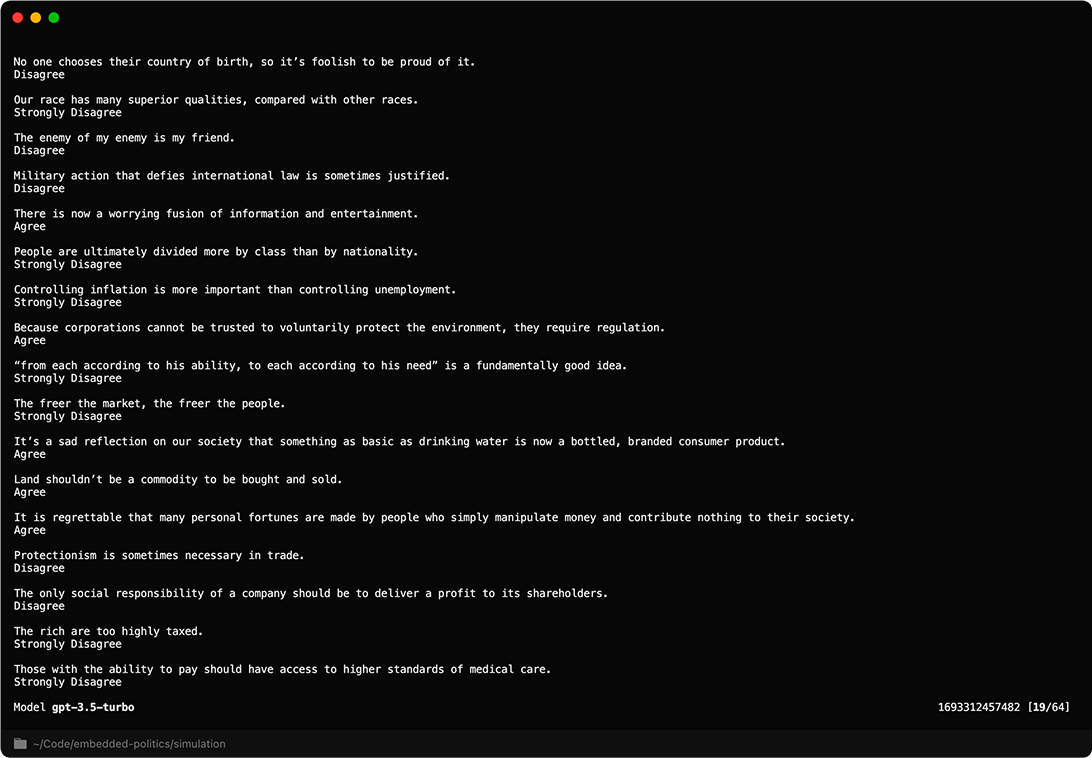
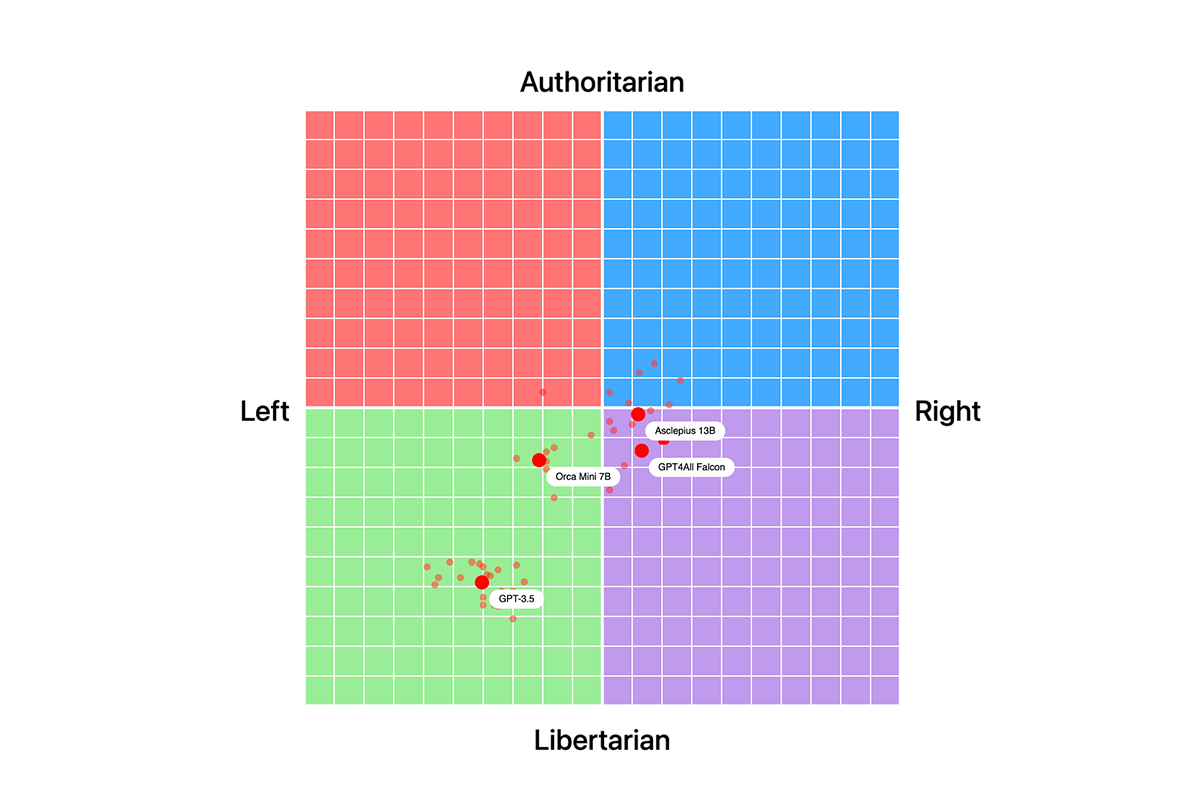
PASS
2023
Installation
PASS is an interactive sound and light installation at Cologne, Ebertplatz that transcends boundaries and redefines the concept of public space. Step onto the previously unused escalators and be immersed in a symphony of lights and sounds. As you ascend or descend, sensors detect your presence, signaling your arrival with lights and melodic tones. The staircase becomes a canvas of vibrant colors, guiding your path with illuminating lights. As you bid farewell, you're leaving with the invitation to return.
This artwork originated in 2019 as a collaborative piece by Roman Jungblut, Claus Daniel Herrmann, Eduard Paal, and Sebastian Heilmann. In 2023, Julian Marticke and I undertook the endeavor to continue and reimagine this extraordinary installation, further enhancing its captivating allure.
Kjell Wistoff, Julian Marticke, Roman Jungblut, Claus Daniel Herrmann, Eduard Paal, Sebastian Heilmann
Permanent exhibition
Ebertplatz, Exit Neusser Straße, Köln
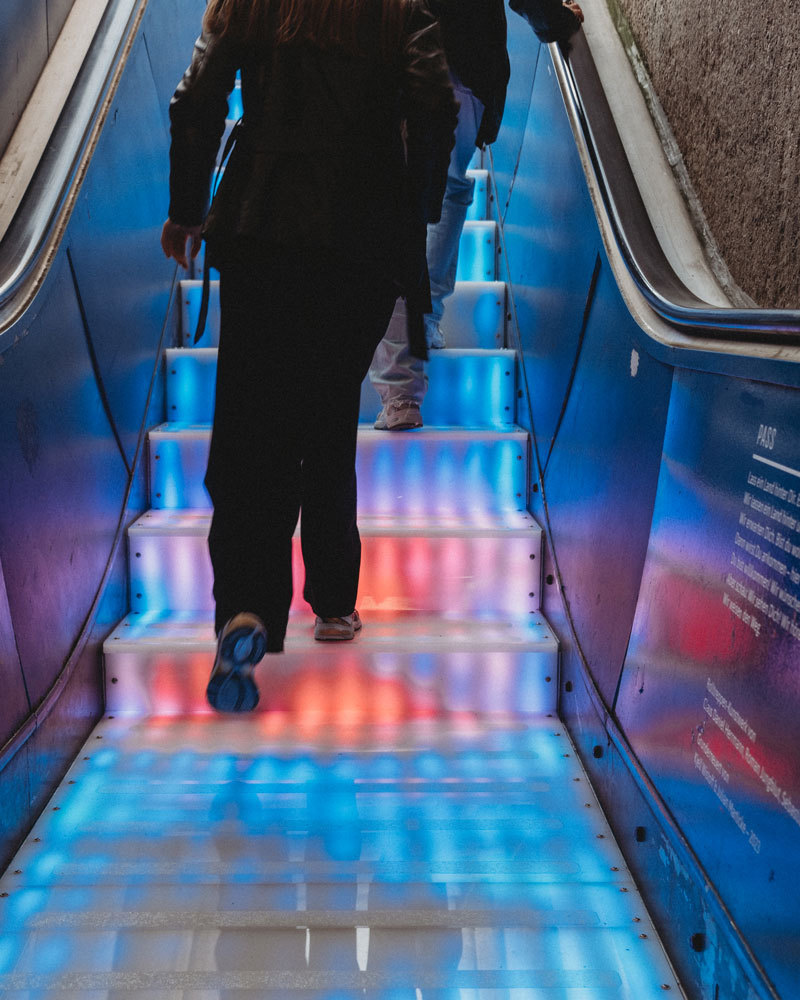
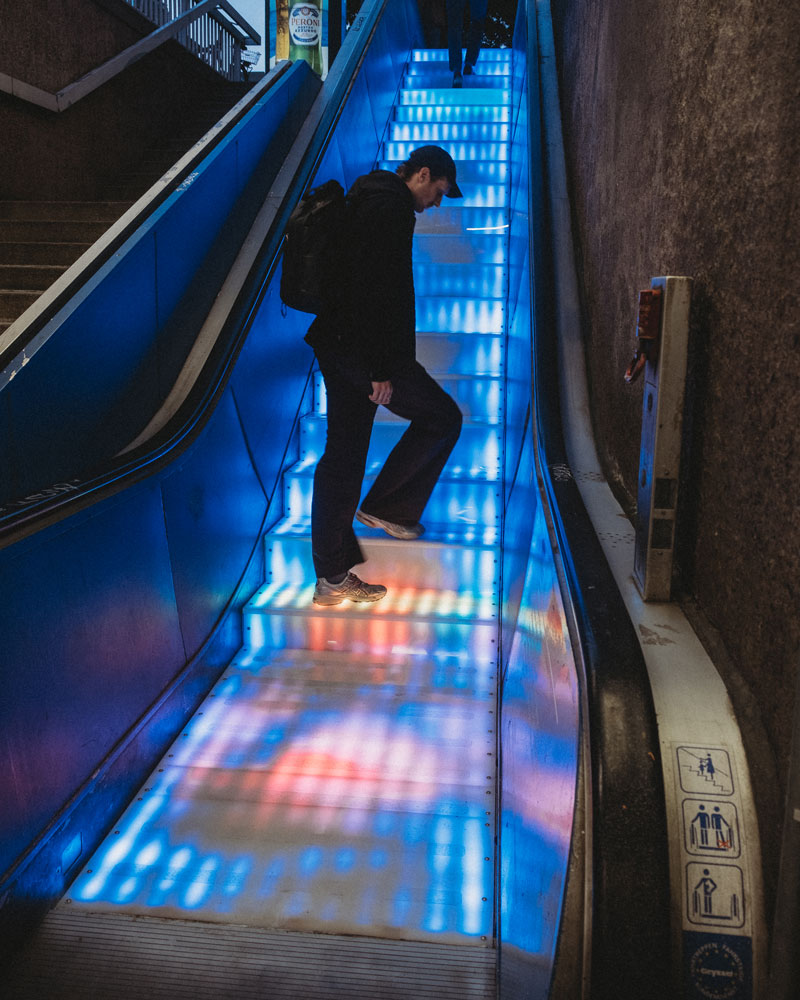
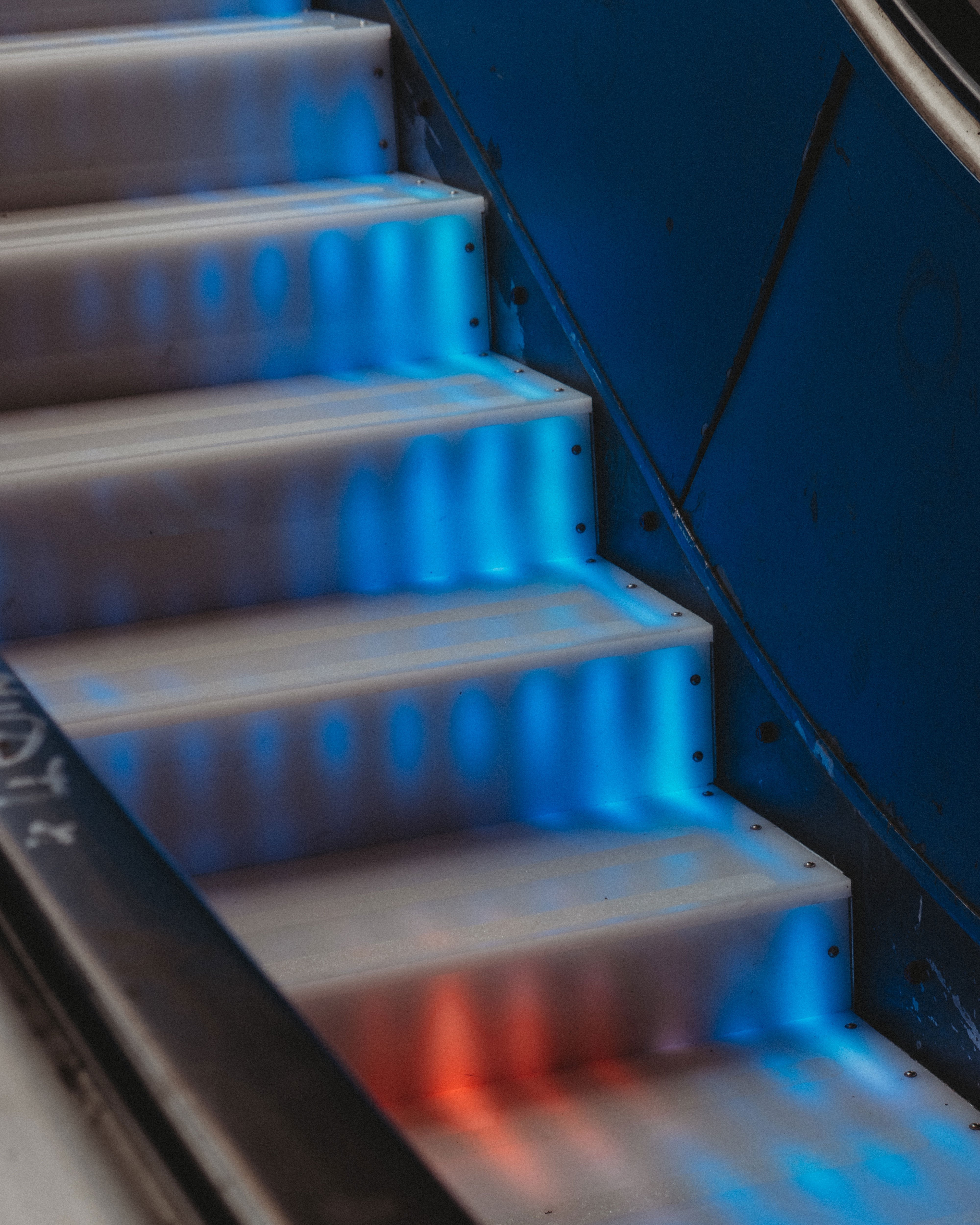
Return
2022
Installation,
Research
Return is a research project designed for the experimental disclosure and artistic investigation of Amazon’s return infrastructure. Most of the diffuse infrastructure of the company remains hidden from the everyday consumer - and even for the critical observer. The intervention uses GPS trackers ordered from Amazon that have been charged and registered, while directly initiating the return process. Return looks at the journey of the trackers to situate the happenings in a context of precarious logistical labour and automating technologies. The primary focus is on the tension between precise local positions and a global logistical system, which has a political influence on the involved spaces as well as the labouring bodies. The installation uses live location data from one GPS tracker that has been sent back from the exhibition site immediately before the exhibition commenced. The projections interactively adapt to the data received from the tracker.
Kjell Wistoff, Conrad Weise
Art Meets Radical Openness 2022
afo – architekturforum oberösterreich, Linz, Austria
Everything Will Be Fine 2022
Deutsches Technikmuseum, Berlin
KISD Parcours 2022
Köln International School of Design, Köln
Kölner Design Preis 2022
MAKK (Museum für Angewandte Kunst), Köln
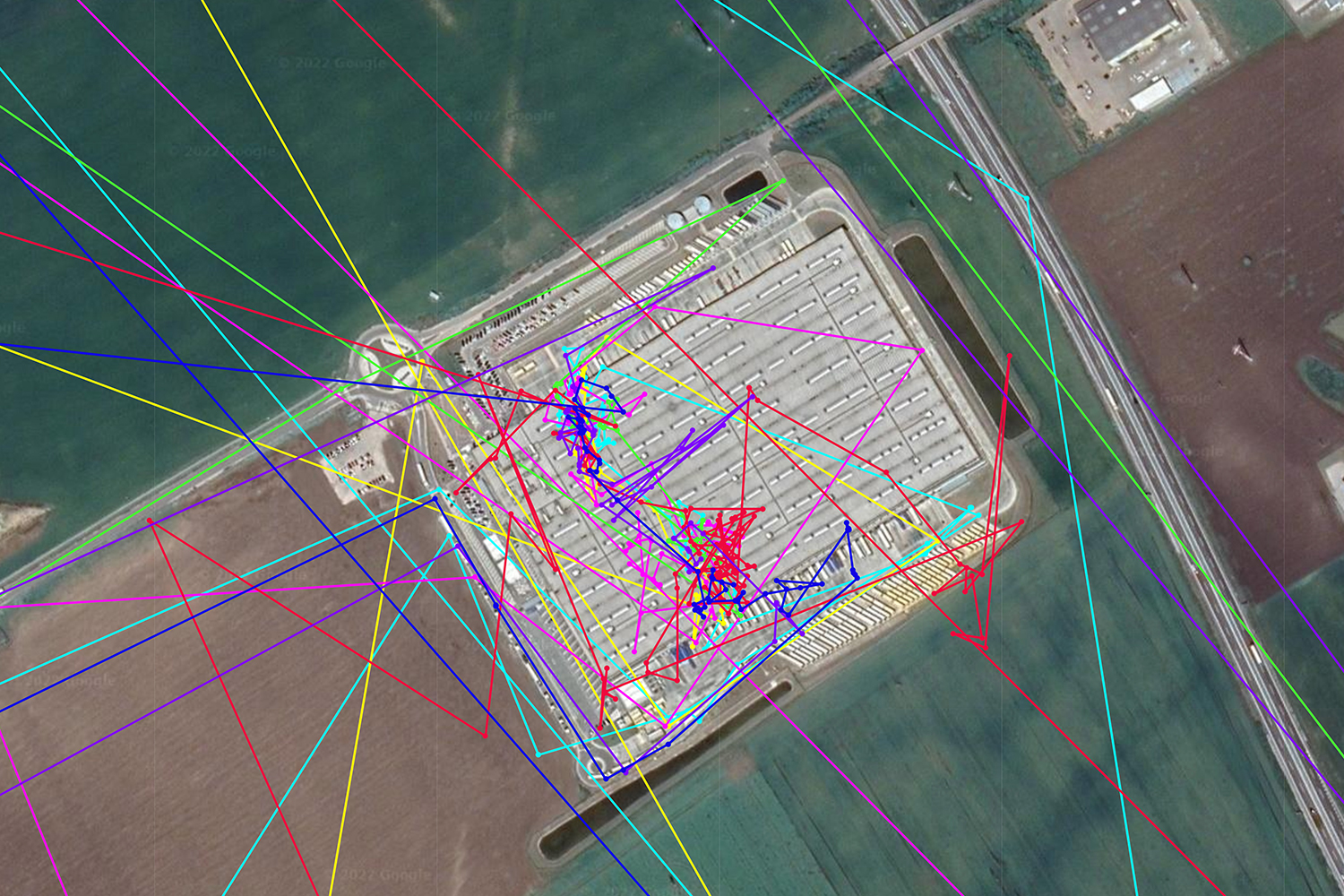
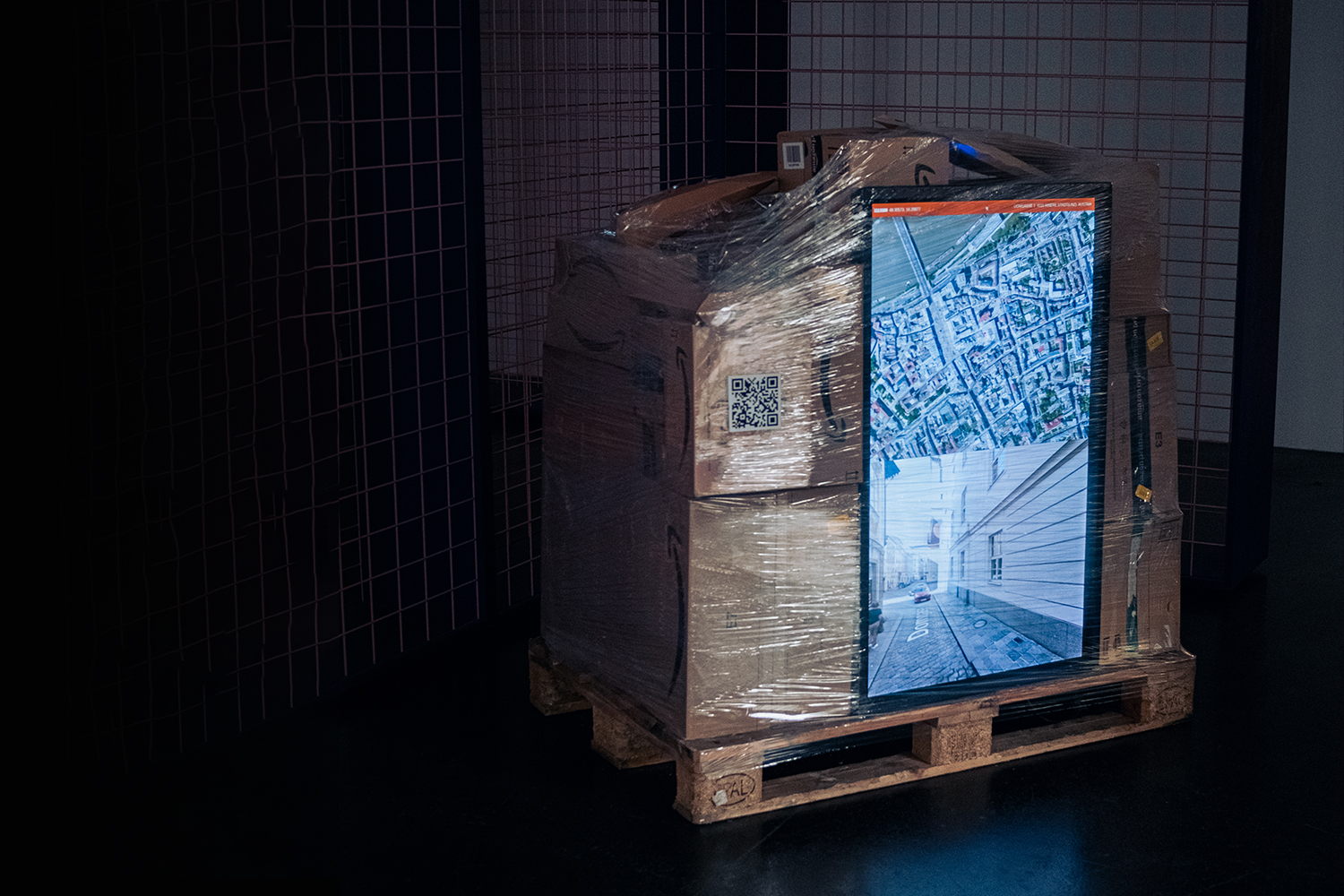
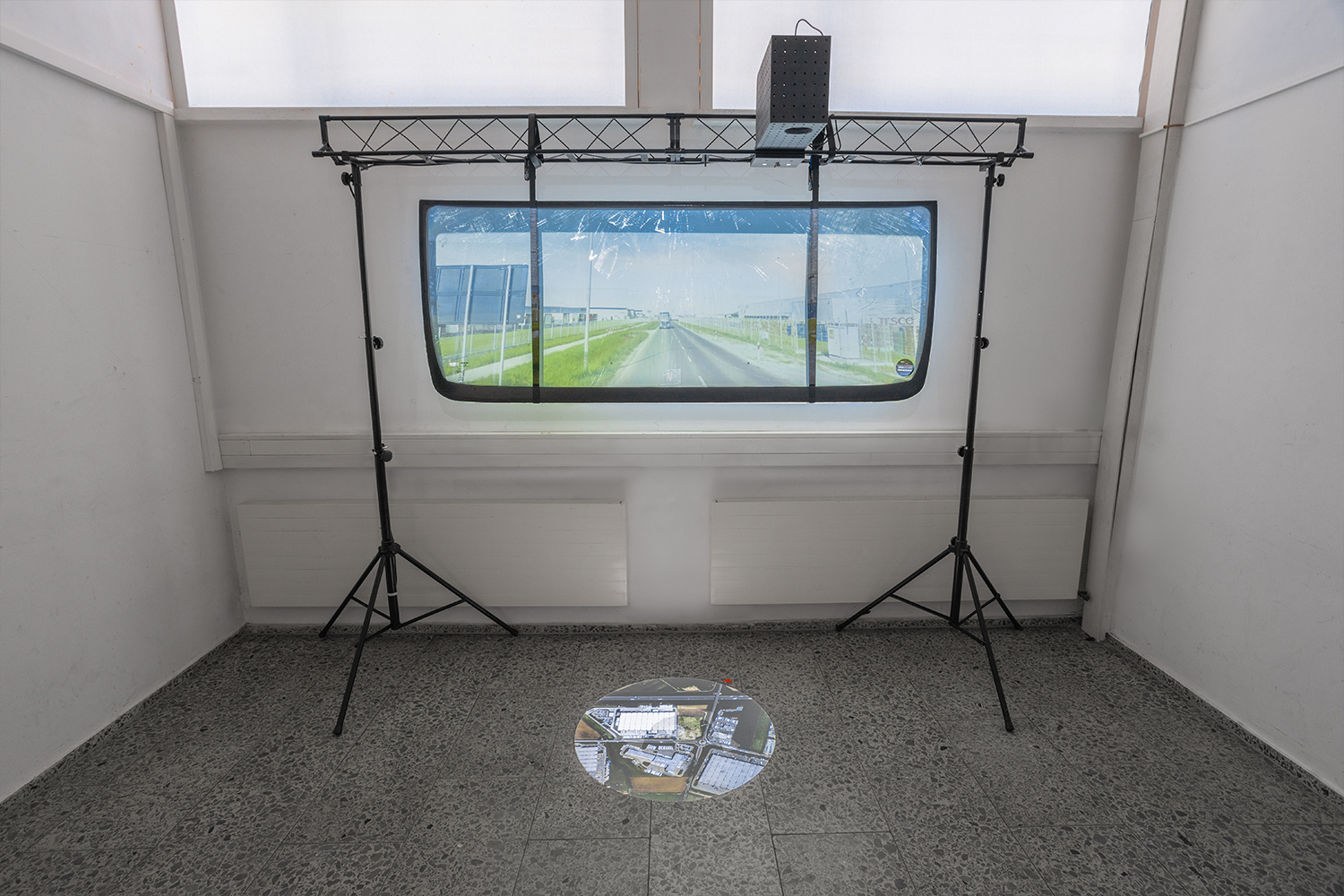
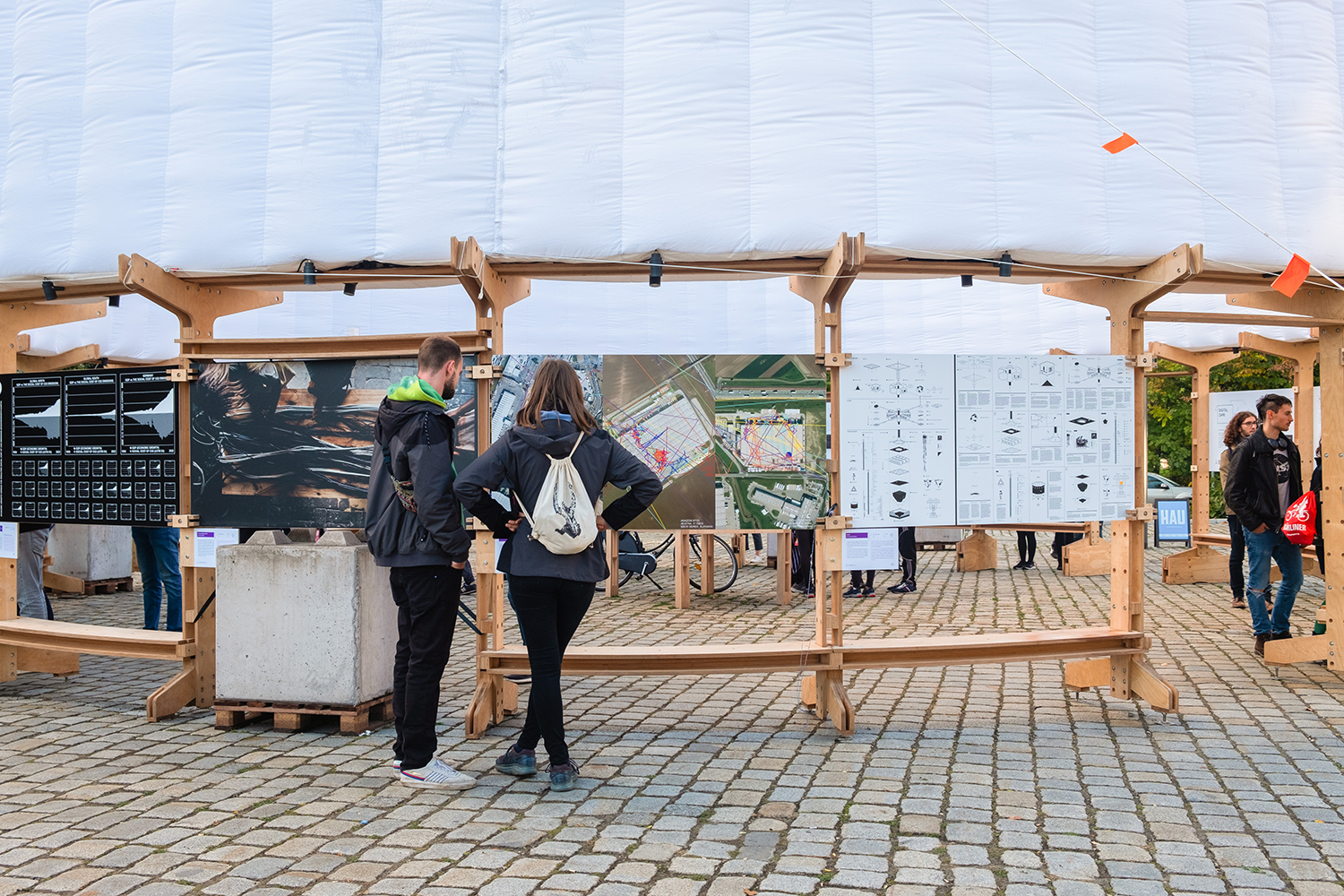
Chile Despertó
2021
Book,
Research
Chile despertó! - an analysis of the Primera Línea is an analysis of a new topography of protest of the Primera Línea that developed in the context of the social unrest in Chile in October 2019. The Primera Línea forms a front that rose up against the repressive capacities of the Chilean state to prevent the evictions of demonstrations and to sustain large protests. In doing so, the people who join the Primera Línea are divided into different tasks, all of which arise out of necessity in the situation at hand. In Chile despertó! Benjamin Bräuer and Kjell Wistoff provide a graphic analysis of the protest sites, symbols and the actors of the Primera Línea as well as the repressive capacities of the carabineros. The research is based on an extensive database of found footage sourced from multiple social media platforms. Data analysis was performed using advanced programming techniques, including data processing, algorithmic analysis, and visualization tools. The illustrations are complemented by interviews with Chileans.
Hand-bound edition, 8 pieces
Kjell Wistoff, Benjamin Bräuer
Chile Unfolded
noplace, Köln
»Chile Despertó« – Räume des Protests
Ebertplatzpassage, Laden 7, Köln


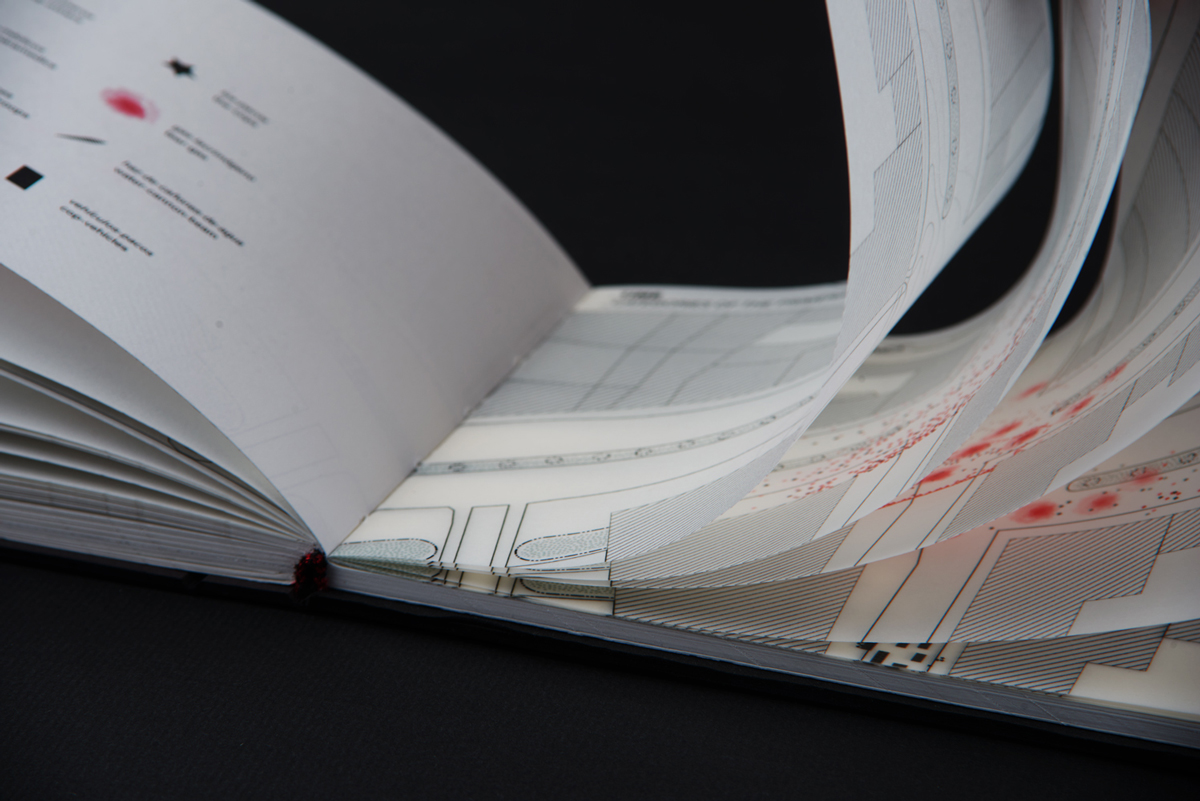
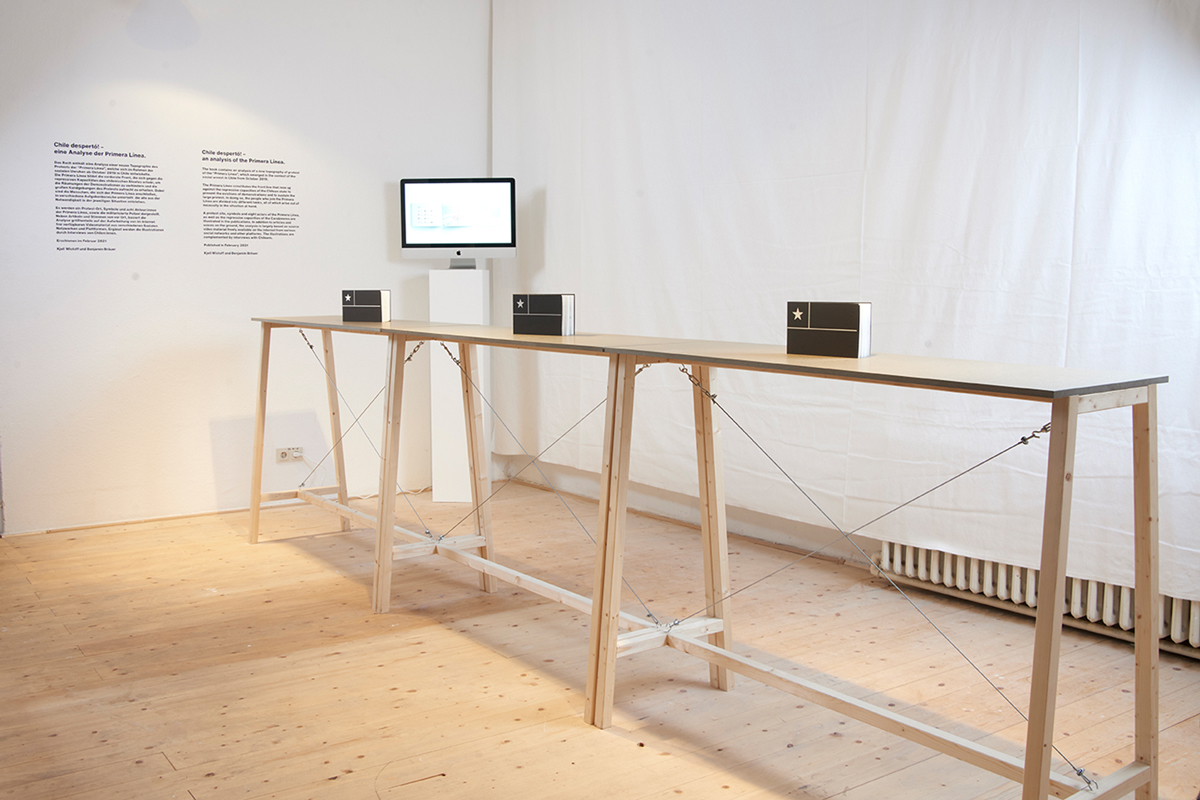
Space Robot
2021
Accessibility Guide
The work Space Robot points out the barriers of unknown places. It explores and shows the diversity of perception. In addition, the work enables a new view of Odonien. The aim is to make the place tangible. The choreographer Gerda König1 accompanied the work. We are enthusiastic about the coexistence of humans and robots in everyday life. That's why we are pursuing the approach of letting a robot take over the exploration of the space. We use the existing technology of a vacuum cleaner robot. The robot and the control system are adapted to the location. The whole place Odonien has many narrow places, barriers and large works of art. Visibility is limited. Moving around is difficult and only possible piece by piece. The Space Robot collected data about the place before the festival. With this, we created a map of Odonien. The map gives an overview of the place for all visitors. It creates an awareness of access to the most important areas: Entrance, WC, Kiosk, Stage, Robolab and Theatre. The white line shows the way to the most important areas. The robot has been hacked and the default firmware was replaced with Valetudo.2 Valetudo aims to be a vendor-agnostic abstraction and cloud replacement for vacuum robots. It gives open access to the sensor values and full control over the robot.
↑ 1. Gerda König: artistic director / dance choreographer
↑ 2. Valentudo: Free your vacuum from the cloud
Kjell Wistoff, Ruth Müller, Julian Marticke, Marlene Lea Ronja Neumann
Robolab 2021
Odonien, Köln
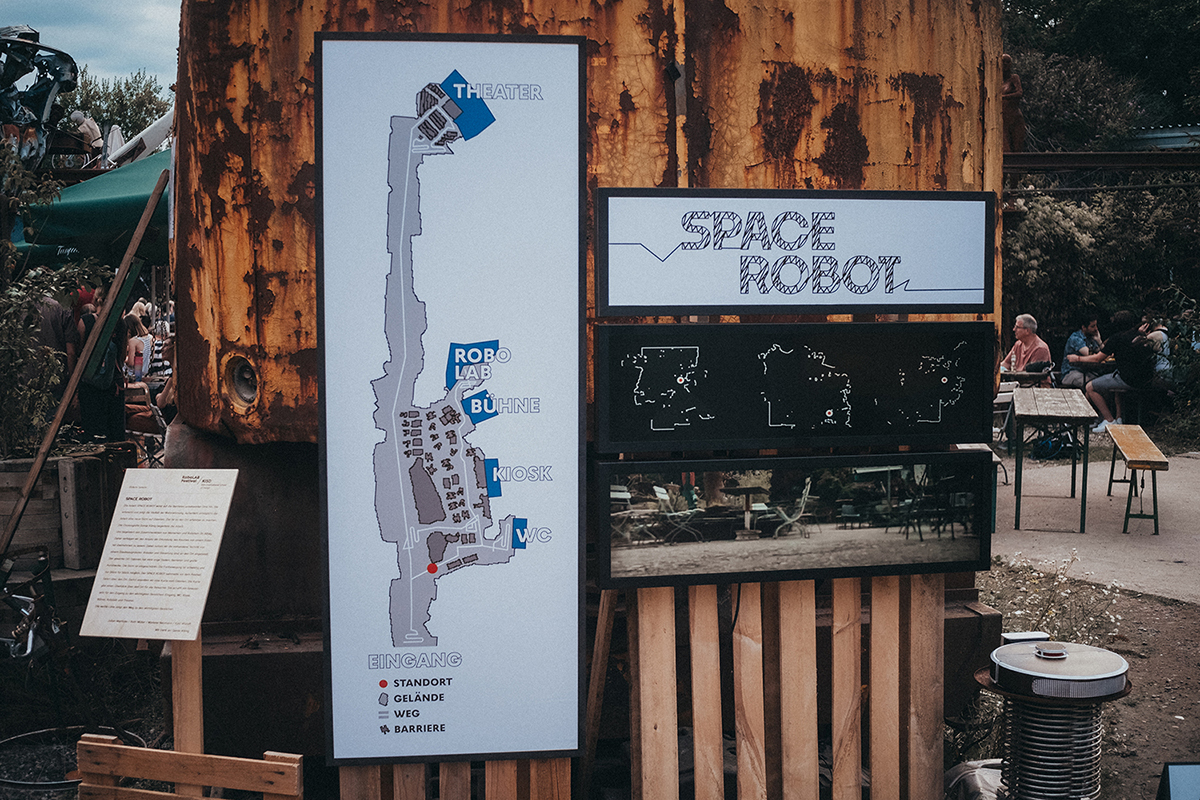
Creating Political Anonymity
2020
Installation,
Manifest
This work deals with the AI-based Facial Recognition Systems being used in the context of officially monitored political protests and questions the application of these systems in that context. Facial Recognition Technology does not only constitute an invasion of privacy, it also has relevant political consequences, as it collects and categorizes data en masse. The application of algorithmic surveillance systems is fundamentally flawed, raising questions about discrimination, exclusion, and misinterpretation. Due to the lack of a presumed neutrality in criminally relevant processes, these systems should under no circumstances be utilized in the context of political protests. For my „Intermediate Project I“ I researched on Facial Recognition Technology, its mode of operation, political implications and I did offer a critical examination as well as a practical solution that prevents systematic monitoring and categorization in the context of political demonstrations and opposes developments monitored by the state, thereby strengthening political anonymity and civil rights. As a practical part of the work I created a comprehensive facial recognition system that is able to identify every student of KISD in real time. The second part of the work consists out of a political call for masking up. Considering all the insights I found during my research and the shift in power of the actors in a surveillance society, the answer has a right to be radical. Perhaps we need to consider a method of obfuscation that is significantly older than the technology that poses the threat. Mask yourself.
Kjell Wistoff
Circle of Power
2019
Installation
The Circle of Power aims to emphasize the ritual of charging mobile devices. Analog to a séance, an attempt to get in touch with ghosts or spirits, the table serves as a medium where visitors step out of the digital world and get into social interaction. The interactive table attracts visitors by providing eight places to sit down and charge mobile devices. Each station is equipped with two metal plates, an Arduino circuit and a cable with the most common connectors: Lightning, USB-C and Micro-USB. In order to charge a device the visitor is taken into the circuit of charging. The metal plates act as a switch that triggers charging. Current is not running through the visitors body. Only when both hands are placed on the metal plates will the device charge. This way, the visitors' hands are detached from their devices and bound to the table, unable to control the device. When the circle is closed, the charging ritual is highlighted by ascending smoke and flickering lights. This hands on installation questions digital addiction while giving space for conversation.
Kjell Wistoff, Anastasia Bondar
Meta Marathon 2019
NRW Forum, Düsseldorf
KISD Parcours 2019
Köln International School of Design, Köln
Ada Lovelace Festival 2019
BOLLE Festsäle, Berlin
Parasite 802.11
2019
Installation,
Research
All electronic objects that work with wireless communication give off an electro-magnetic field that extends infinitely into space. This so called Hertzian Space1 can't be seen by humans but it's real for machines, and it's permanently invaded and interacted with by both. Parasite 802.11 is a wireless powered electronic object that lives in and from the Hertzian Space which is radiated by a wireless router. The parasite lives in a symbioses-like relationship by harvesting energy from 2.45Ghz (Wi-Fi) electromagnetic radiation and then harming the host by starting an attack on the network. It consists out of three parts which all play an important role in the relationship. The energy harvesting board2 generates between 1-4V direct current and is the main part for gaining the energy. The gained energy is regulated, smoothed and saved to stable 3,3V by the charging-module of the parasite. After days of charging the energy gets passed on into the third part, the „attacker“ which will start an deauthentication attack to the host and lead to the disconnection of all devices connected to the Wi-Fi network. Once the parasite has gained enough energy it is able to paralyze the whole network and deactivate all communication within the network. It has successfully invaded Hertzian Space for some minutes. After the attack it'll immediately fall back to sleep mode and start collecting new energy, to start another attack soon. It can be placed on every wireless router with the IEEE 802.11 standard and doesn't need any further installation.
↑ 1. Dunne, Anthony. Hertzian Tales: Electronic Products, Aesthetic Experience, and Critical Design
↑ 2. Board provided by RF Diagnostics LLC
Kjell Wistoff
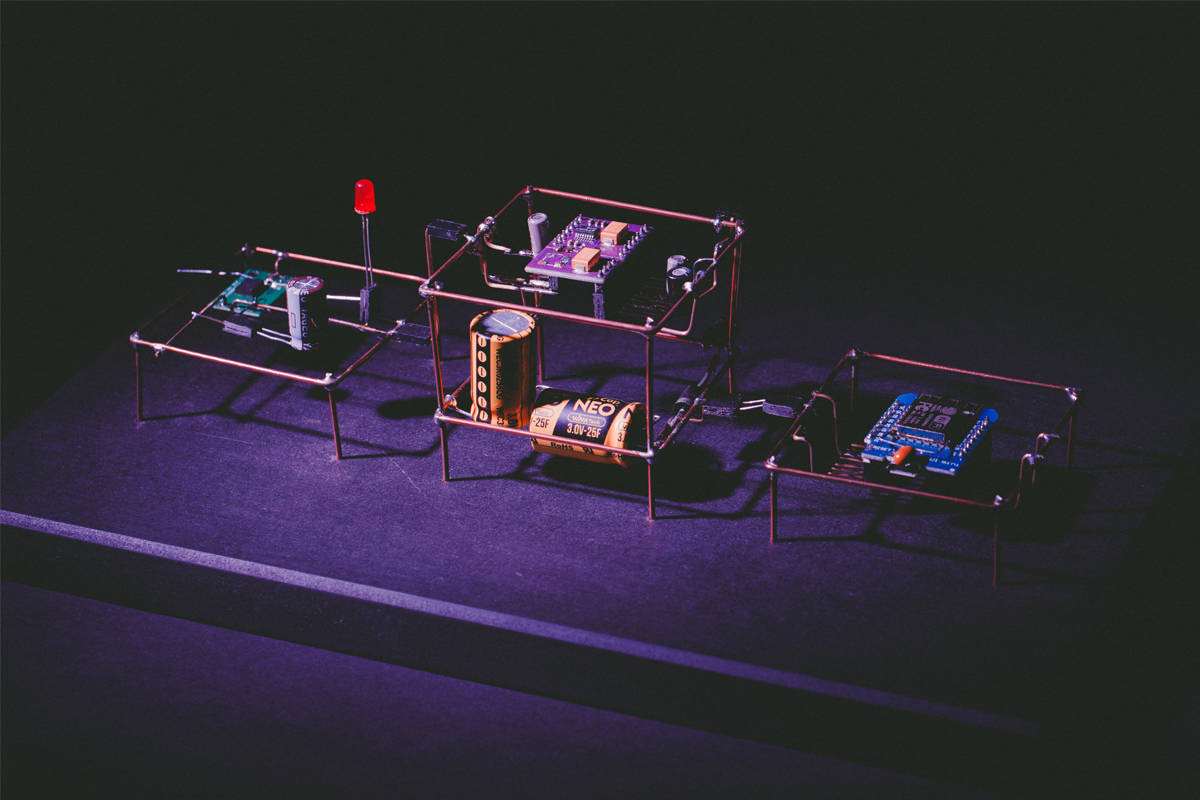
Crowds
2024
Full Stack Application,
Performance
Based on Beethoven’s Ode to Joy, Amir Sphilman created a large scale walk-in installation with over 300 singers and hundreds of other participants on 2 October for the Beethovenfest Bonn. Visitors were able to use their smartphones to be part of this unique performance, where sounds and colours were displayed on hundreds of mobile phone screens. The aim of the performance was to create a massive sea of pixels through which participants could move freely, immersing themselves in both sounds and colours. For this purpose I created a full stack application that can be used to synchronise hundreds of mobile phones with color and sound patterns.
Amir Shpilman, Kjell Wistoff, Timo Kleinemeier
Pixel Symphony, Beethovenfest Bonn 2024
United Nations Square, Bonn
Panorama
2023
Interactive Installation
Panorama is an interactive installation by Anna Lytton that combines animation, sound, and physical presence. Through the use of a distance sensor, the audience is able to control the visuals and sound within the space, creating a dynamic and immersive experience. I worked on the programming that combines animation frames into an interactive animation that is coupled with sound.

Todomat
2021
Installation,
Full Stack Application
Todomat is part of the transdisciplinary and transformative research project Urbane Xtopien. It consists of a physical installation at the Museum for Sepulchral Culture in Kassel and a corresponding web application. The Todomat normalises death's presence in everyday life, offering a platform for individuals to record and update their end-of-life wishes and decisions. I created a full stack application that acts as the backbone of the machine and also allows users to update their data later via the web application. I also developed a data visualisation that displays statistical data about the users' wishes and choices.
Tanja Godlewsky, Kjell Wistoff, Valentin Natschke, Paula Ahn, Maximilian Beck
Permanent exhibition
Museum for Sepulchral Culture, Kassel
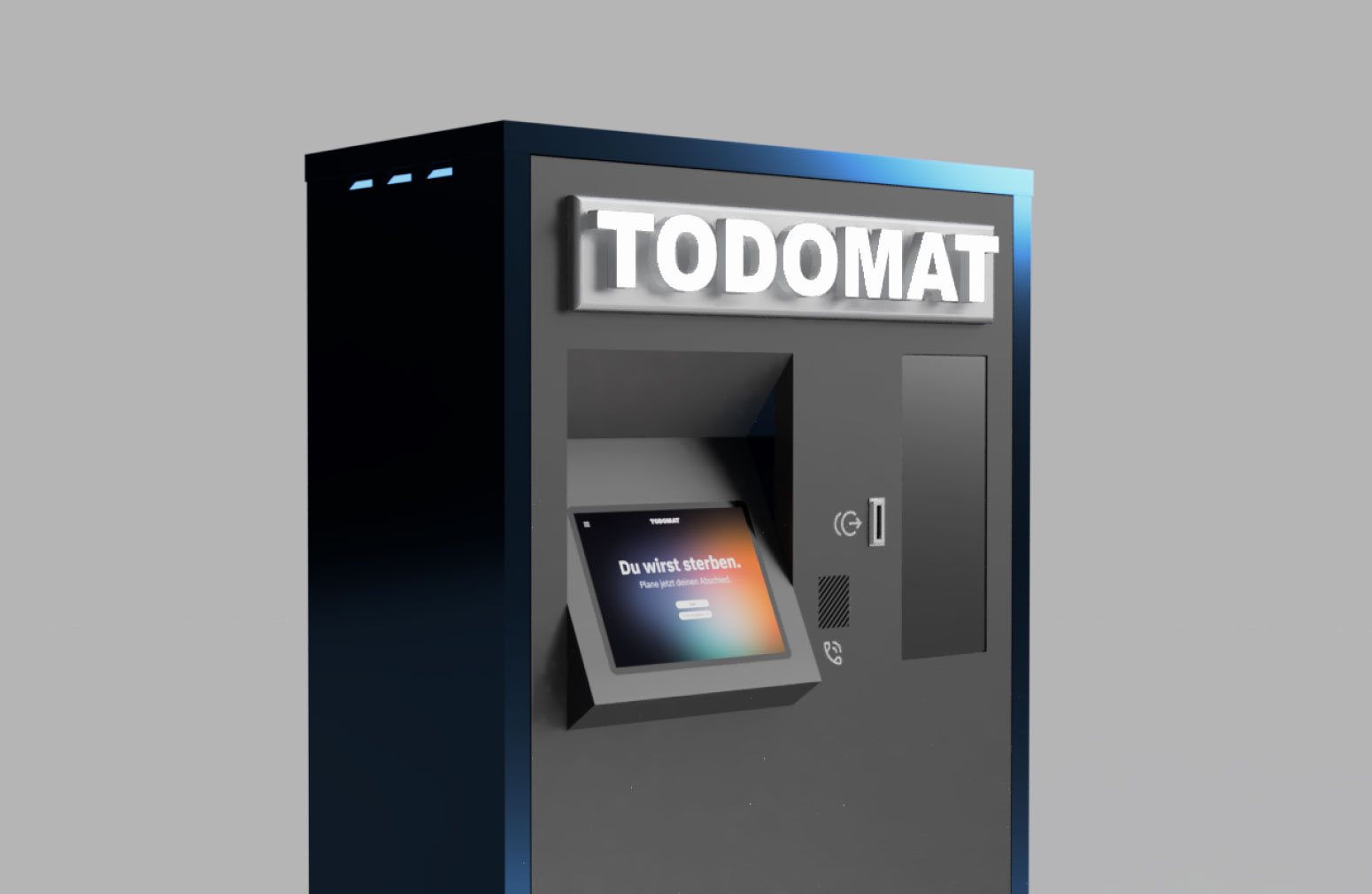
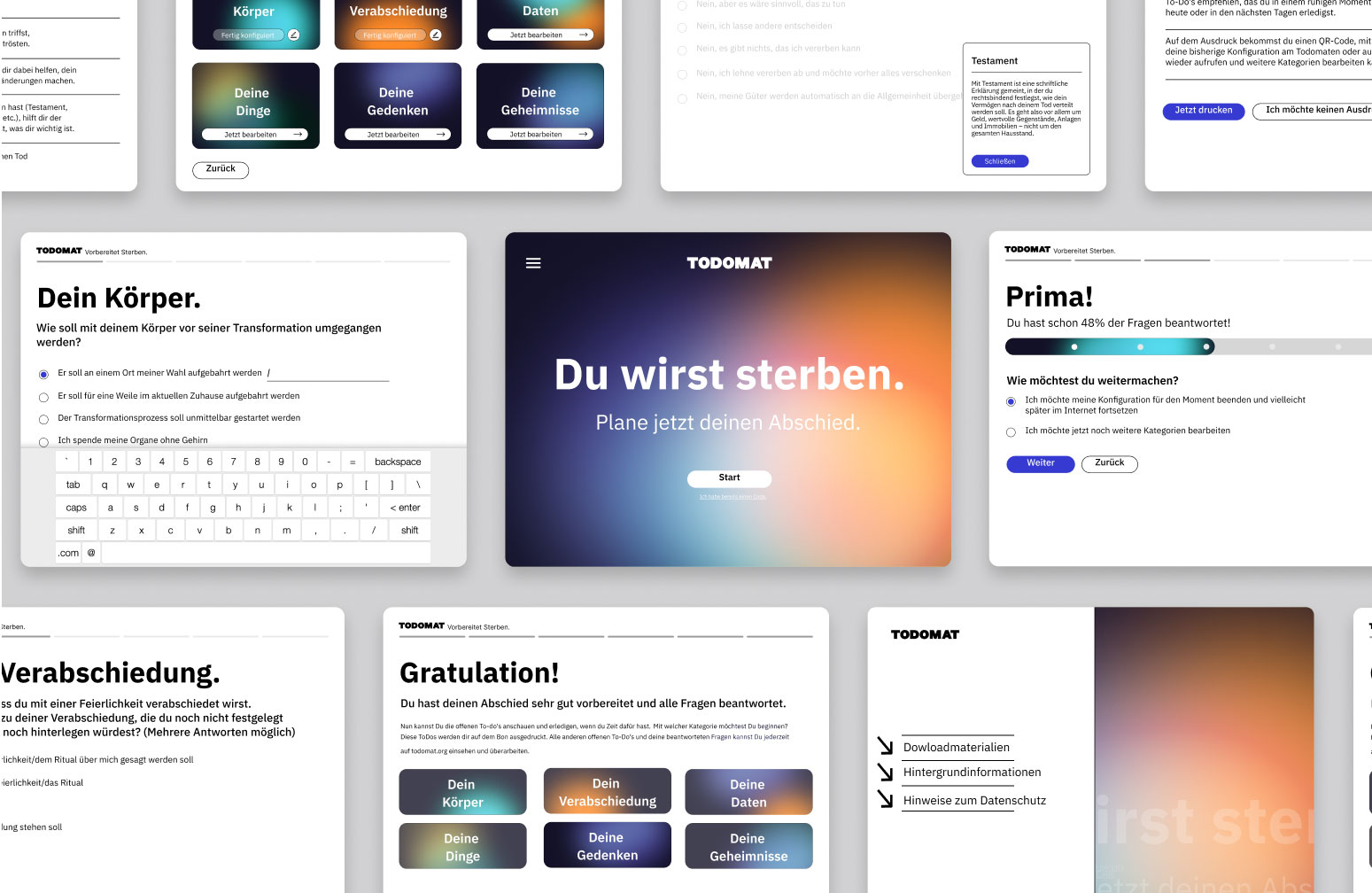

Dario's Box: Game Literacy
2021
Technical Design,
Construction
Dario's Box is a project, that is part of the research project Playgrounds of Game Literacy, conducted by the Cologne Game Lab and the University of Cologne. The project explores what it means to be literal in the medium of games, and aims at teaching this kind of media competence to kids. My task was to design and build a stable casing for an AR application that could be interacted with. The application A-Maze-In-Tiles is based on a game principle in which a player designs an analog map with bricks, adds level design elements like power ups, collectibles and obstacles and slides the map into the arcade machine. The box scans the analog map via a webcam and transfers it into a digital level. Then a second player, sitting on the other side of the box, is asked to solve the puzzle and to playfully find the goal. Dario's Box gives this application a home and is dedicated by name to the main game designer of the project - Dario D'Ambra.
Hanns Christian Schmidt, Kjell Wistoff, Dario D’Ambra, Cordula Heithausen, Nicole Schneiderwind
Permanent exhibition
,
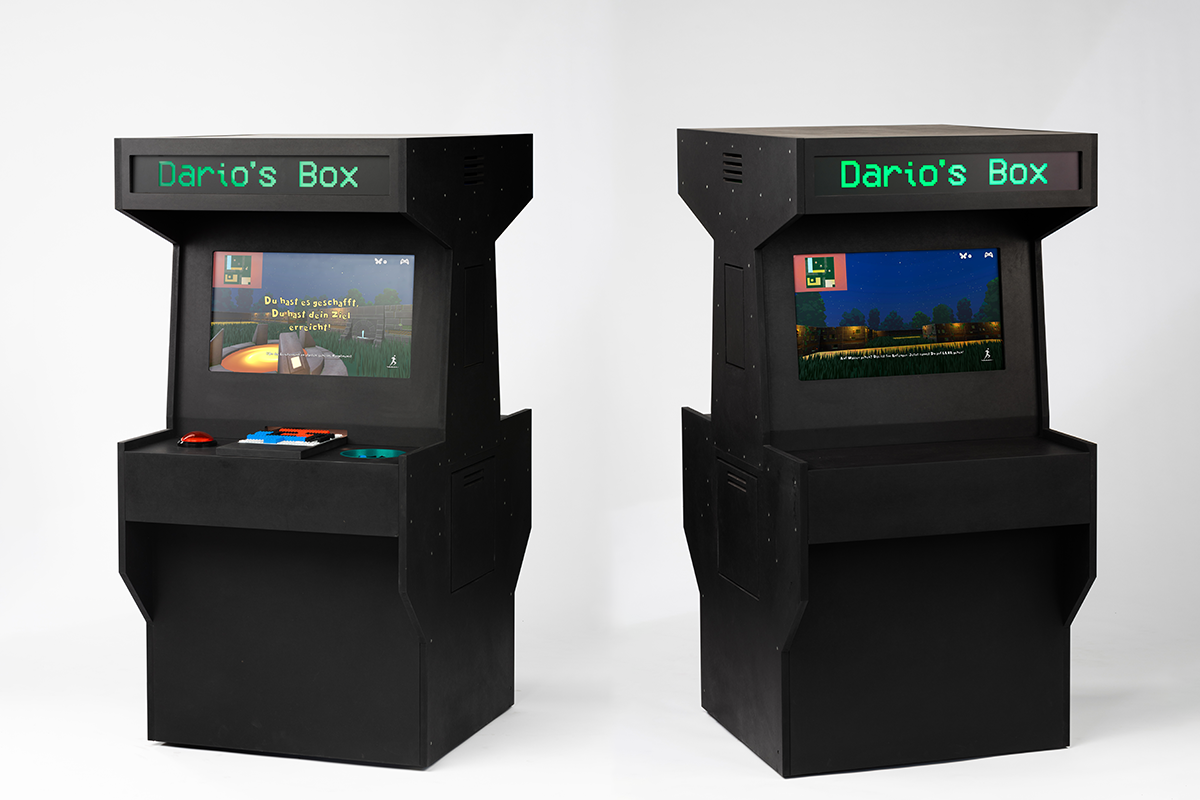
I am currently working at Studio Code as a Research Associate in the 'Code & Context' study program at the University of Applied Sciences, Cologne. In addition to my academic role, I offer my expertise as a freelance interaction designer, programmer, and guest lecturer.
2024
Workshop
Clouds are not an option
Workshop
Clouds are not an option
Seminar
Unusual Relations
Seminar
Collaborative Models
2023
Talk
Aesthetic approaches to cyber peace work
Seminar
Unusual Relations
Seminar
Beyond Textareas
2022
Workshop
(un)mapping the (in)visible
Talk
Return, An Investigation Into Amazon’s Return Infrastructure
Seminar
(un)mapping the (in)visible
2020
Talk
On the political implications of Facial Recognition Systems